(828 products available)













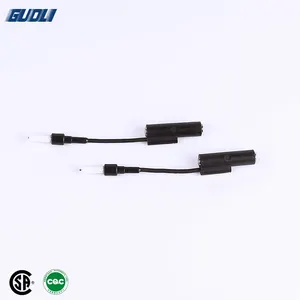
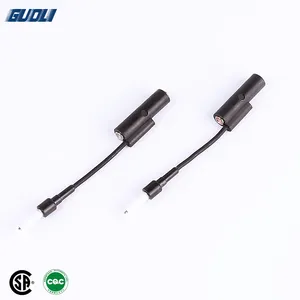






















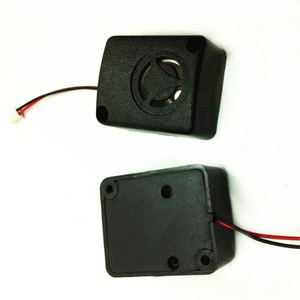

















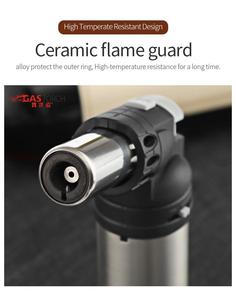

















































































































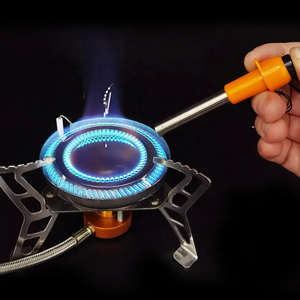

























Small piezo igniter
A high-voltage generator igniter that works by pressing a button is what one would typically think of when referring to piezoelectric igniters. These igniters are famous for their automatic ignition systems. They are prevalent in modern gas cooktops, torches, and lighters. Piezo ignition is a gas lighter ignition technology powered by piezoelectric crystals. It creates a spark through rapid crystal compression, generating voltage for ignition. The system involves a push button activating direct crystal compression, generating high-voltage electric discharge. This creates a spark that ignites the fuel. These igniters are highly reliable since they use piezoelectric crystals, so they won't fail due to battery or fuel system failure. They also have a long life span because when the button is pressed, mechanical wear is minimal, and there are no electrical contacts that wear out. The igniters are also very small and can fit nicely into compact devices. Devices that require lighter and more robust ignition systems can use piezoelectric ignition, which is practical and economical.
Electronic Igniters
Electronic igniters use electric power to create a spark for ignition. They are generally more reliable and can produce a consistent spark for ignition. Electronic igniters are mostly used in applications like gas furnaces, and they need constant electricity for them to operate. Electronic ignitors use mechanisms that mainly rely on electronic components for ignition. The circuits produce a high-voltage spark, and electric power supply is required for ignition. Their reliability and consistent ignition are benefits of electronic igniters.
Flame Safeguard Controls
Flame safeguard controls are ignition systems that monitor the flame's presence after ignition. If the flame goes out, they shut off the fuel supply for safety. These controls are thus crucial for applications that use combustion, like industrial burners, because they ensure safe operation. Flame safeguard controls use complex mechanisms with several sensors, controllers, and safety valves. They continuously monitor the combustion process's flame, and in case of any abnormalities, the controls shut off the fuel supply to prevent potential hazards.
Cooking Grills:
The small piezo igniter is very useful for igniting gas burners on cooking grills because it is fast and convenient. Instead of having to light the burner with a match or lighter, which can be dangerous, the piezo igniter allows cooks to easily start the burner with the push of a button. This makes it very simple and safe to start grilling. The piezo igniter works by creating a spark when the button is pressed, so the gas burner lights right away. This means cooks don't have to worry about lighting the burner using an open flame which could cause a fire accident. It allows the gas burner to be started safely and conveniently just by pressing the button of the piezo igniter. Because of this, many gas cooking grills now use piezoelectric igniters for their burners as an easy and safe way to start them instead of matches or lighters.
Camping Stoves:
Camping stoves that run on propane or other liquid fuels often have piezoelectric igniters built in. These allow campers to light their stoves easily by just pushing a button without using matches or lighters. The igniters create a small spark that ignites the gas when the stove burner is turned on. This makes cooking with the stove quick and safe. Campers don't need to worry about lighting the burner with an open flame, which could cause a fire. The igniter lets them start the stove easily and safely. Because of this, many camping stoves now have piezoelectric igniters for their burners. It offers a simple and safe way for campers to light their stoves. The igniters turn on the burner with a spark, so stoves can be started without matches or an open flame.
Outdoor Fireplaces:
Outdoor fireplaces that burn gas often use a piezoelectric igniter. The igniter allows the fireplace to be lit easily and safely with a spark from the burner. It replaces having to light the burner with a match or lighter, which can be dangerous. Many gas-burning outdoor fireplaces now have piezo igniters for this reason. The igniter provides a convenient way to light the fireplace. Campers don't need to worry about lighting it with an open flame anymore. The spark from the igniter turns on the burner. This lets them start the gas outdoor fireplace easily and safely without using a match or lighter to light it. The piezoelectric igniter makes lighting the gas burner quick and safe.
Fireplace Logs:
Some gas logs designed to look like wooden logs in a fireplace have piezoelectric igniters. These allow the burner of the gas log set to be lit easily with a spark. The igniters replace having to use a match or lighter to light the burner, making it safer. To start the gas logs, the igniter creates a small spark that lights the burner when ignited. This provides a convenient and safe way to start the burner of the gas log set. Lighting it with a match or lighter is no longer needed, which could be dangerous. The piezo igniter allows the gas logs to be lit quickly and safely. It turns on the burner with a spark from the igniter, so starting the logs is easier. Now, many gas log sets have piezoelectric igniters for this reason. It offers a simple and safe way to light the burner.
While piezoelectric ignition systems have many advantages, there are also some drawbacks to consider. The igniter's cost and complexity compared to traditional matches or lighters are two disadvantages. Additionally, electric- and battery-powered igniters are less environmentally friendly than gas-powered options because they require fuel and emit greenhouse gases. More significantly, piezoelectric igniters cannot be used during power outages or when batteries run out, making them less reliable and convenient than gas-powered burners. Ultimately, the benefits and drawbacks of piezoelectric ignitions must be weighed carefully to determine if they are the right choice for a particular application.
Here are some tips for choosing the right piezoelectric igniter:
Q1: Is a small piezo igniter safe?
A1: Piezoelectric ignition is a reliable ignition method. Manufacturers prioritize safety standards and regulations during production. Additionally, a piezo igniter produces no open flame or spark, making it safer than other ignition sources.
Q2: How to maintain a piezo ignition system?
A2: Maintenance is minimal. Keep the igniter clean and free from dirt. Check connections regularly. Also, ensure no parts are worn out or damaged. Worn-out parts may need replacement.
Q3: What are the benefits of piezoelectric ignition over traditional methods?
A3: Piezo ignition systems are more reliable, safer, and efficient. They also provide consistent ignition. Plus, they reduce fire hazards since they don’t use open flames or sparks. Also, the igniters are more durable because they reduce wear and tear on ignition components. This makes them cost-effective.
Q4: Does the piezo igniter generator produce steady power?
A4: Piezo ignition may not produce steady power. However, it is reliable for low-power applications. Power fluctuations are expected when powering high-volt appliances.
Q5: Can a small piezo igniter be repaired?
A5: Most igniters are not easily repaired. They are designed for simple replacement of parts. Nonetheless, some specialized technicians can repair some igniter components.